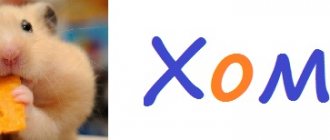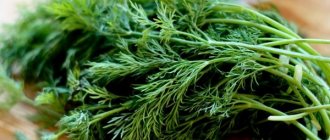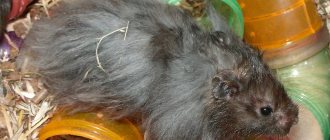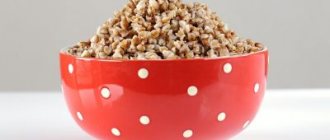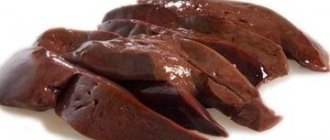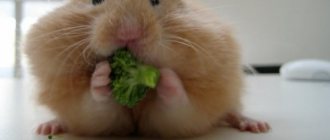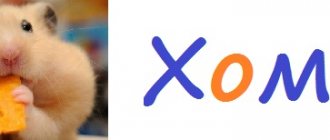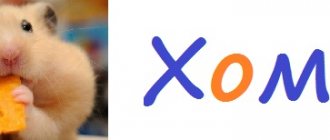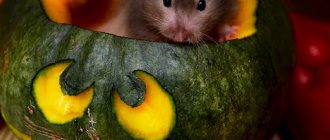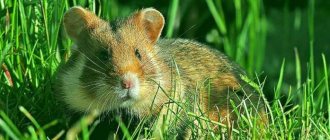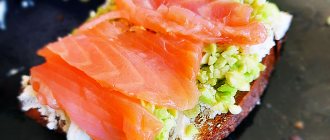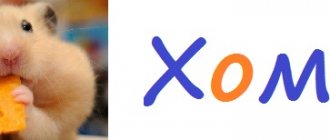- home
- Nutrition
19.03.2018
You always want to pamper your pets with various additives to their main diet. Unfortunately, not everything that seems tasty is healthy for hamsters. Before you feed your furry little friends, you need to find out how safe a particular product is for them.
A hamster needs vegetables regardless of the time of year, both raw and boiled. The daily intake should be at least 50 grams. Summer is replete with a variety of vegetables, including cucumbers. We need to figure out whether hamsters can eat cucumbers, how healthy they are, and in what form and quantity rodents are allowed to eat them.
Useful properties and composition of the fruit
Fresh cucumber is a dietary product containing many vitamins and microelements. In addition, it consists of 95% water, which flushes the kidneys and removes toxins from the body. The familiar green vegetable is simply a storehouse of minerals:
- potassium (necessary for blood vessels and heart);
- magnesium (reduces the risk of heart disease);
- fluoride (has a beneficial effect on bone tissue);
- iodine (has a beneficial effect on the thyroid gland);
- sodium (participates in the production of gastric juice);
- zinc (strengthens the immune system);
In terms of fiber content, it is a leader among other vegetable crops. Need I mention that consumption improves intestinal motility and gently cleanses it, and is a prevention of diseases of the cardiovascular system.
It is recommended to give cucumbers that are grown in season. Since for early harvesting nitrates are added, which in small quantities will not harm humans too much, but even small portions can be destructive for the animal.
Is it possible to give hamsters large cucumbers?
It is advisable to give Syrian or Djungarian hamsters small fruits, since the concentration of ascorbic acid in them is an order of magnitude higher than in grown specimens. In any case, the compounds of iodine, chlorine, phosphorus and magnesium contained in the pulp will have a beneficial effect on the general well-being of the rodent, enrich the body with a complex of useful substances and strengthen immune properties.
- phosphorus and magnesium are essential components of rodent bone tissue;
- iodine is an important component of the hormone “Thyroxine”, which is responsible for the functioning of the thyroid gland;
- chlorine is a component of blood that maintains cellular pressure;
- potassium is a participant in protein metabolism and a regulator of water content in body tissues.
Cucumbers in the diet of Djungarik and Syrian hamsters
Djungarians and Syrian hamsters are the same animals as their relatives. They like to store cucumbers and other leftover food in reserve.
The consequence may be poisoning. It is better to remove half-eaten cucumbers from the cage after feeding, so that stale vegetables do not cause your pet to become ill. In addition, babies have a very sensitive digestive system, and you should not overdo it with cucumbers. It should not be given in large quantities.
You can give your Syrian hamster cucumber. It will help with constipation and is a good dietary product. An excellent remedy for obesity, which is often found in this type of hamster. In addition, they have diabetes, sweet vegetables are contraindicated, but a cucumber will only be beneficial. It is better to choose medium-sized fruits; they contain more ascorbic acid.
Give complementary foods in small portions. Choose clean products without damage or signs of rotting.
In what form can it be given?
When choosing a green treat for your pet, you should give preference to those cucumbers that were collected during their natural ripening period. If the products are purchased at the market or in a store, and not grown in your own garden plot, you need to pay special attention to the pre-processing of vegetables. The top of the fruit will be safer for the rodent, since most of the nitrates accumulate at the base.
Important! Pesticides and various chemicals used to accelerate the growth of fruits pose a real threat to the life and health of the hamster.
Fresh
It is best to give your pet fresh vegetables, which contain the maximum amount of vitamins and nutrients. Before use, they should be thoroughly rinsed under running water. If you are not sure about the “safety” of the product, it is recommended to soak the cucumbers for several hours in cold water - during this time the nitrates will partially dissolve, and their elasticity and juiciness will increase. It would not be superfluous to peel the vegetable, especially if it is bitter.
Syrian hamsters should be offered fresh cucumbers based on their general condition. If an animal suffers from constipation, this vegetable, which has a laxative effect, is simply necessary for it. However, if the rodent has diarrhea, consumption of this product is not recommended. Djungarian and Chinese hamsters, who are prone to excess weight and diabetes, will only benefit from cucumber “desserts”.
Video: can a hamster have a cucumber?
Canned
Canned fruits can successfully replace fresh vegetables in the cold season. However, this alternative is not suitable for furry pets. Hamsters should not be fed canned cucumbers. This rule applies to representatives of all domestic breeds. Heat treatment in combination with preservatives makes the product dangerous to the health of the animal.
Salted and pickled
Cucumbers treated with salt, sugar, spices and vinegar are prohibited from being added to the diet of hamsters. Salt causes urinary system diseases in rodents. Spices and vinegar negatively affect digestion and can cause allergic reactions. And sugar increases the already high risk of developing diabetes in dungarian and Chinese hamsters.
Important! Cucumbers can quench thirst, but they are not able to replace water, so we must not forget about the drinking regime.
Salted and pickled foods
Salted and pickled vegetables are completely unsuitable for hamsters. Salt, spices and vinegar are strictly prohibited. And it’s unlikely that the animal will touch them when trying to treat it. In addition, the lack of information about the place and methods of cultivation does not guarantee that an environmentally friendly product is being purchased.
Is it possible to allow a hamster very large portions?
Having clarified whether hamsters can eat cucumbers, it is necessary to take into account the amount of crunchy fruits in order to avoid overfeeding and unbalanced diet. It is important to remember that the measure is the key to the pet’s health. It is rare that a hamster will refuse the opportunity to have a snack, but the animal should not be given excessively large portions.
Despite the comprehensive usefulness of fresh cucumber, it is necessary to provide the rodent with gastronomic variety. Between cucumber portions, treat the animal with greens and grains, specialized food and do not forget about the drinking bowl, which should always be full of clean water. Cucumbers are a great thirst quencher, but you shouldn’t hope that they can replace regular drinking.
Fruits
We sorted out the question of vegetables and the question of whether hamsters can have fresh cucumbers. Now let's move on to fruits. So often you want to pamper your funny hamster with something tasty and healthy. But what can you give a rodent? What fruits will not harm the health of the baby?
First of all, hamsters can't eat citrus fruits. Secondly, their diet should not contain “overseas” fruits. For example, kiwi and bananas. And before you treat the animal, you need to wash the fruit, ideally scald it with boiling water and cut off a small piece. The list of healthy fruit goodies is below:
- Apples.
- Pears.
- Peaches.
- Apricots.
- Plums - a little.
- Dried fruits: raisins, dried apricots, dried apples.
Fruits must be fresh and in no case rotten or spoiled.
Feeding fresh cucumber
Hamsters love homemade cucumbers
Considering the modern technology of growing vegetables, which are simply stuffed with chemicals, the degree of their usefulness is sharply reduced. By consuming a product grown in this way, not only its benefits are lost, but the risk of poisoning also increases.
Therefore, if you are interested in the question of whether hamsters can have fresh cucumbers, they can, but only those not treated with pesticides. Domestic rodents can be given cucumbers grown naturally, preferably from their own garden.
When including this vegetable in your diet, do not forget:
- Before feeding a cucumber to a rodent, rinse it thoroughly under running water.
- If you have any doubts about its quality, it is better to soak the fresh product in clean water for a few minutes. All harmful substances dissolve well in water.
- Cucumbers that contain bitterness must not only be soaked, but also peeled. Your furry won't even touch a bitter product.
- It is not recommended to feed young animals with this product, as there is a risk of gastrointestinal irritation, which can cause diarrhea, vomiting and even death.
- This product can be offered no more than once a day. Excessive consumption of cucumbers in food can cause stomach upset and diarrhea.
What to feed sick and weakened rodents
The menu for sick and weakened pets depends on the nature of the pathology. For example, if an animal has lost its incisors, solid food is contraindicated until new teeth grow. For diarrhea, before visiting the veterinarian, give boiled rice, rice water and chamomile infusion. For pain, offer soft, tasty and easy to eat food. For example, meat purees and porridges.
Exhausted and weakened pets must first be forced to eat. In critical condition, the animal begins to prepare for hibernation. This is the last attempt to survive.
To prevent your pet from falling asleep, pour a lot of grain food into the cage. This will create the appearance of large reserves and relieve stress. Peeled oats and wheat are suitable for feeding; you can add some peas and corn.
After getting out of a stressful state, the hamster stops intensively stocking up. He needs to be given high-calorie, tasty food for 2-3 weeks. Softened porridges and purees are suitable. There should always be food in the tray.
The fact that the hamster is not feeling well can be indicated by its lethargic state and refusal to eat.
Cabbage and its varieties
Syrian hamsters are prohibited from introducing it into their diet - the structural features of the gastrointestinal tract do not allow them to digest cabbage fibers.
Djungarian and Roborovsky hamsters can be offered the following types during the season (from August to November) 2-3 times a week, 50 grams each:
- colored (fresh, boiled);
- Beijing (fresh);
- broccoli (fresh).
You can read more about the formation of the diet of Djungarians and Syrians in separate articles.
It is not recommended for hamsters to include white cabbage in the menu - it causes fermentation in the intestines. And red-headed varieties are strictly prohibited - death is possible due to bloating.
Can a hamster get cucumbers from the store?
Buying vegetables in a store or market is fraught with a high content of nitrates, which can provoke poisoning in an adult, not to mention a small animal, whose body is tens of times smaller. If it is not possible to test the fruits for the concentration of harmful substances, give the hamster the plant in small portions and peel off the peel. It is safer to treat your pet with the top part, since the bulk of nitrates collects at the base of the fruit.
You can please your pet with cucumbers grown on your own plot more often. In domestic plants, the amount of harmful substances is minimal or completely absent if the plantings have not been treated with chemicals. You can feed your hamster with juicy pulp after one month of age, and by the age of 1.5 years, vegetables should be included in the rodent’s regular diet.
Cucumbers will be a useful addition to your pet’s diet if you maintain balance and do not overfeed your pet with green vegetables. It is very important to offer only fresh fruits, excluding pickled varieties. It is recommended to always clean the skin to protect the hamster from unwanted consequences, since they are very sensitive to pesticides even in small quantities.
When creating a thoughtful diet for a rodent, consisting of a variety of plant crops, do not forget about the additional vitamin complex. The presence of useful elements in food does not guarantee the animal a complete set of micro- and macroelements, so the correct selection of vitamins is indispensable for a pet.
Feed the animal cucumbers that you are completely sure are safe. If in doubt, it is better to treat your hamster with food from a pet store and not risk his health.
Features of feeding a pregnant or lactating woman
While bearing and feeding offspring, the female Syrian hamster needs to eat heavily. During this crucial period, she requires a slightly larger amount of nutrients. A complex of vitamin and mineral supplements should also be introduced. The diet includes more fresh greens, sprouted grains and high-protein foods. Food should be as varied as possible and definitely healthy.
Veterinarians advise putting a mineral pebble (sold at any veterinary pharmacy), a piece of chalk, coal or calcium gluconate inside the cage as a treat. A pregnant or lactating female hamster usually has an increased appetite and she usually becomes very anxious when food is scarce. To avoid negative consequences for her and her offspring, it is recommended to increase the amount of feed given. It is better if there is always food in the bowl, but it must be fresh.
What to feed small hamsters
For the first four weeks of their lives, small hamsters feed exclusively on their mother's milk. There is no need to feed them additionally. Newborn hamsters left without a mother (or in the absence of milk from her) are fed with soy-based infant formula for the smallest (from birth 0+). You can also feed it with a cat milk replacer.
Once they reach the age of one month, they begin to be offered other food. The digestive system of babies is still very delicate, so the diet of adult hamsters is not suitable for them.
Regular grain food is poured into a bowl so that the kids can rummage through it and choose what they like. It is better not to give nuts, fruits and other treats for now, but to put them aside for later (until he grows up). Hamsters should be fed milk formula and porridge; you can mix steamed oatmeal or buckwheat flakes with baby puree (from various vegetables or meat). Gradually, one by one, other products are introduced: sprouted grains and young shoots, fresh herbs.
Differences in care and maintenance
Djungarian and Syrian hamsters differ in the nuances of care and maintenance.
Representatives of both breeds need their own territory in the form of a spacious cage. It is worth choosing a home with the minimum bottom parameters – 15*30 cm.
Active and mobile dwarfs need space and exercise. The cage needs to be equipped with tunnels, passages, and a running wheel should be placed near the house. If the grate is shallow, then the nimble miniature rodent will not escape from there.
Syrian hamsters, unlike Djungarian hamsters, benefit from a spacious multi-story cage with tunnels and labyrinths. They need a lot of space due to their large body size. Representatives of this breed are smart, so they will leave their home without any problems if the door has a simple latch and the space between the bars is too wide. Therefore, golden hamsters need to buy a metal cage with a plastic tray and a secure lock on the door.
In the wild, the animal is capable of running several kilometers per night when fleeing from predators or in search of food. In captivity, special accessories will help you throw out excess energy: a running wheel, slides, labyrinths, tunnels, passages.
With a lack or absence of physical activity, animals begin to develop health problems:
- obesity;
- diseases of the heart and blood vessels;
- weakening of the immune system.
In addition to accessories for entertainment, the cage should be equipped with a small house for the hamster, a drinking bowl with a retractable limiter and a feeder. The owner must make sure the pet understands how it works. The water should be changed 2 times a day to keep it fresh, and the drinking bowl should be washed regularly.
Cage bedding and a sand or ash bath will help get rid of unpleasant odors and parasites. Representatives of both types of hamsters like to bury themselves in sawdust to sleep. You should not bathe your pets in water, it causes them stress.
In general terms, the diet for Djungarian hamsters does not differ from the menu for Syrian hamsters. High-quality store-bought food contains almost all the beneficial substances that a rodent needs. The diet is supplemented with vegetables, herbs, fruits, berries, and protein foods. But for Djungarian rodents, you need to select foods that contain less sugar, as they are prone to diabetes.
The feeding regimen of dwarf hamsters does not differ from the routine of Syrians - 1 or 2 times a day. They eat in the evening or evening and early morning
It is important to ensure they have access to food so they can snack when needed. The daily portion of food for Syrian hamsters is about 100 g, and for Djungarian hamsters - no more than 30 g
Pets periodically need to be given rough food to wear down their incisors. These can be walnuts with shells, tree branches.
Djungarian hamsters are no different from Syrian ones in the need to create a supply of food
It is important to regularly check the cage for the presence of such “pantries” to remove spoiled food. If a hamster eats it, it will get poisoned
For the same reason, you should regularly remove leftover food from the feeder after a meal.
It is better to keep Djungarian and Syrian hamsters in a separate cage. However, the former are more loyal to their brothers, so they can exist in a team. To reduce the likelihood of conflicts, you need to provide your pets with a spacious cage with separate houses, running wheels and feeding accessories. Then they will intersect less often and will be able to live peacefully. Golden hamsters live separately from other pets.
Rodents of different sexes are housed together during female estrus for mating. This process takes no more than 24 hours, then it is advisable to place them in separate cells. Otherwise, the female attacks the male.
The gestation period for Djungarian hamsters is 20–26 days, and for Syrian ones – 16. The former give birth to 1 to 11 babies, and the latter – from 8 to 10.
After 3–5 weeks, it is better to resettle the female and her cubs, otherwise she may kill or eat them. After this time, the hamsters switch to adult food.
If representatives of both breeds hibernate, this may be due to a decrease in temperature, lack of light, poor nutrition, and stress. In most cases, the pet needs to be woken up, and errors in care and maintenance must be corrected.
Features of application
Fresh cucumbers can be given to dwarf pets in adulthood, starting from 1.5 years. In adults, the digestive system is able to digest such a product and use it for the benefit of the whole body.
This versatile product is beneficial for obese hamsters. They can replace high-calorie foods.
Cucumber is an excellent substitute for vitamin C because it contains this component in large quantities. It is introduced into the daily diet of hamsters fed dry food. A product with a high content of fiber and liquid, speeds up and facilitates the functioning of the digestive system on dry rations.
It is especially good to give this product to your pet if it suffers from frequent constipation. But, if your rodent has diarrhea, he should not be fed cucumbers for a while. In this case, the following products are introduced into the diet menu - yogurt, kefir. Vegetables, herbs and fruits are excluded. Your hamster should only eat dry food.
Feeding pickled cucumber
When asked whether it is possible to give hamsters pickled or pickled cucumbers, the answer is clear - no! In the process of preparing pickling, salt, vinegar, and sugar are used. These products are contraindicated for pet rodents.
Salt, which is part of canned, salted or pickled products, contributes to the development of diseases of the genitourinary system. Vinegar is irritating to the gastrointestinal mucosa and can cause severe allergic reactions in the form of itching and redness of the skin. Sugar contributes to the development of diabetes, a deadly disease.
Which hamster is better: Djungarian or Syrian
Both Djungarian and Syrian hamsters need proper care. To understand which hamster is best to get, the future owner must take into account his character and lifestyle.
If the owner spends the whole day at work or periodically leaves home for 1–2 days, then a dzhungarik will be more suitable for him. It is better to buy 2 hamsters from the same litter and place them in a spacious cage with separate accessories, then they are unlikely to conflict. If you provide them with food and drink, they will not even notice the absence of a person.
If the future owner wants to have contact with the animal, then the Syrian hamster will become an excellent friend. Some owners allow the animal to spend all its waking hours in freedom; they are sent into the cage only to sleep
The golden hamster meets the owner if he has gone somewhere, climbs into his arms, and attracts attention to himself
Parents are always unsure which hamster is better to buy for their child - Djungarian or Syrian. If the future owner is under 5 years old, then it is recommended to choose a Syrian.
He is larger, phlegmatic, and has good contact with people. But it is better to buy a pet no younger than 2 months. Using the example of a calm animal, a child will learn to care for rodents: clean the cage, feed.
Djungarians can easily escape from their little owner if he opens the cage to change the bedding or put in food
In addition, the latter can bite the child if handled carelessly, then stress is guaranteed for both
Which hamster is suitable for a child over 5 years old, he will decide for himself. The main thing is to teach him to be responsible and treat animals with care. Adults should supervise the care process.
The Syrian hamster is more suitable for children, as they love to cuddle, pet, play, and train. In addition, they live longer, and Djungarians often do not live up to 2 years
Thus, Djungarians are more suitable for adults who do not need physical contact, are often not at home, and can keep 2 pets. Syrian hamsters will bring joy to children and adults who want to pet, hold and train the animal.
In both cases, you need to provide the hamster with spacious housing, necessary accessories, proper care, care and love.
Benefits and harms
Fresh cucumbers are a dietary product, rich in nutrients, and also a good way to quench your thirst. They are 90% water. Contains vitamins B, C, iodine, fluorine, potassium, calcium, phosphorus and sodium. Microelements are necessary for rodents to strengthen teeth and bones, and other vitamins and microelements are necessary for the proper functioning of the heart, nervous system, and metabolism. They are also an excellent anti-constipation agent and help cope with excess weight in obesity.
Article on the topic: What to feed a Syrian hamster at home, what can be given and what cannot be given
Hamsters happily gobble up cucumber pulp, however, you need to be careful. Rodents under 1.5 - 2 months of age should not be treated in this way - they may not digest what they eat very well and will suffer from diarrhea for some time. Adult rodents can be offered cucumbers no more than once a day. The main thing is to observe moderation in everything, as this is very important for the health of your pet.
Other vegetables
Don't forget to supplement your pet's diet with other healthy vegetables. They will not be among the basic ones, but if consumed 1-2 times a week they will bring tangible benefits to his body.
Eggplant
Recommended for fresh consumption, it is usually alternated with other vegetables, offering the hamster no more than 50 grams at a time. When purchasing, avoid overripe fruits - eggplants are useful because they restore the water-mineral balance in the animal’s body; unripe and stale fruits are not suitable for this.
Pumpkin
Contains a lot of fiber, beta-carotene, good for the eyes, phosphorus, iron, potassium. Useful as a treat even for overweight animals and diabetics. But, unlike carrots, it is not suitable as a daily food.
Pumpkin should diversify the diet, and not become its basis; it is useful in fresh, stewed, boiled form. Be sure to have no peel - it is cut off in a thick layer.
When baking, pumpkin should not be seasoned with oil, spices or salt. This puts a lot of strain on the liver of a rodent, which in nature does not eat such things.
Zucchini
It is one of the dietary products recommended fresh without peel. For sick, weakened, young animals (up to 6 weeks), it is useful to puree it with a blender.
Zucchini cannot be the basis of the daily diet - veterinarians advise alternating it with other juicy vegetables: cucumbers, eggplants, pumpkin.
Zucchini and pumpkin seeds deserve special attention. This healthy treat will help the rodent cope with parasites, as it has anthelmintic properties.
Root vegetables (potatoes, beets, carrots)
Some of them are necessary for the animal every day, others only occasionally. It is also important in what form the rodent receives this or that vegetable. The basic principle is the same as in human nutrition: the less heat treatment a product is subjected to, the more useful substances are preserved in it.
Potato
Veterinarians clearly agree that the vegetable is not recommended for a hamster due to its high starch content. In small quantities, you can occasionally pamper your pet with them - it is acceptable to offer him raw or boiled potatoes, but not fried ones.
Only young potatoes (not green) without pesticides and nitrates are useful for the animal.
Beet
This vegetable is not recommended, but it is occasionally given fresh or boiled to Syrian hamsters. The cube should be no larger than a button, and they start with even smaller sizes in order to track the reaction of the gastrointestinal tract. If tolerance is normal, the portion is increased.
Keep in mind that there are three types of beets - fodder, table and sugar; hamsters are given the second option. The first contains practically no useful substances for the rodent, and the third can lead to diabetes mellitus, especially in Djungarians.
Carrot
It is not only possible, but must be given to the hamster; it is an essential ingredient in the daily diet. A mug 1.5 cm thick is enough for one approach - no more is needed, otherwise the rodent will start making supplies that will quickly spoil.
The best option is to treat your hamster with raw carrots; sometimes it is permissible to diversify the menu with boiled carrots. In addition to vitamins A, C, K, it is rich in dietary fiber, which is beneficial for digestion, and potassium for the heart muscle.
It is recommended to pre-soak all store-bought vegetables in water, this helps remove nitrates and other chemicals from them. Hamsters are sensitive to them, and due to their small size they can be poisoned by even a small portion of vegetables that have absorbed harmful substances.
Sometimes you can put 1 tablespoon of carrot tops in the animal’s bowl - it contains 5 times more vitamins than the root vegetable. But not from a store-bought vegetable - its above-ground parts are often treated with pesticides against pests, which is fatal to the rodent. If it is not possible to treat your pet to greens from your dacha, it is better to buy parsley, celery or lettuce at the supermarket - they are safer for your pet.
Radish
Recommended in small portions 1-2 times a week. Give preference to country vegetables or vegetables grown in your own beds. They contain folic acid, which is especially important for pregnant females; they effectively cleanse the liver and normalize the flow of bile. Pectin cleanses the body of toxins, and its low calorie content makes radishes a dietary product.
Turnip
The root vegetable is useful in all respects, especially for Syrians prone to arthritis - turnips contain substances that protect joints from inflammation. Helps with osteoporosis, serves as a source of potassium and calcium for bones.
